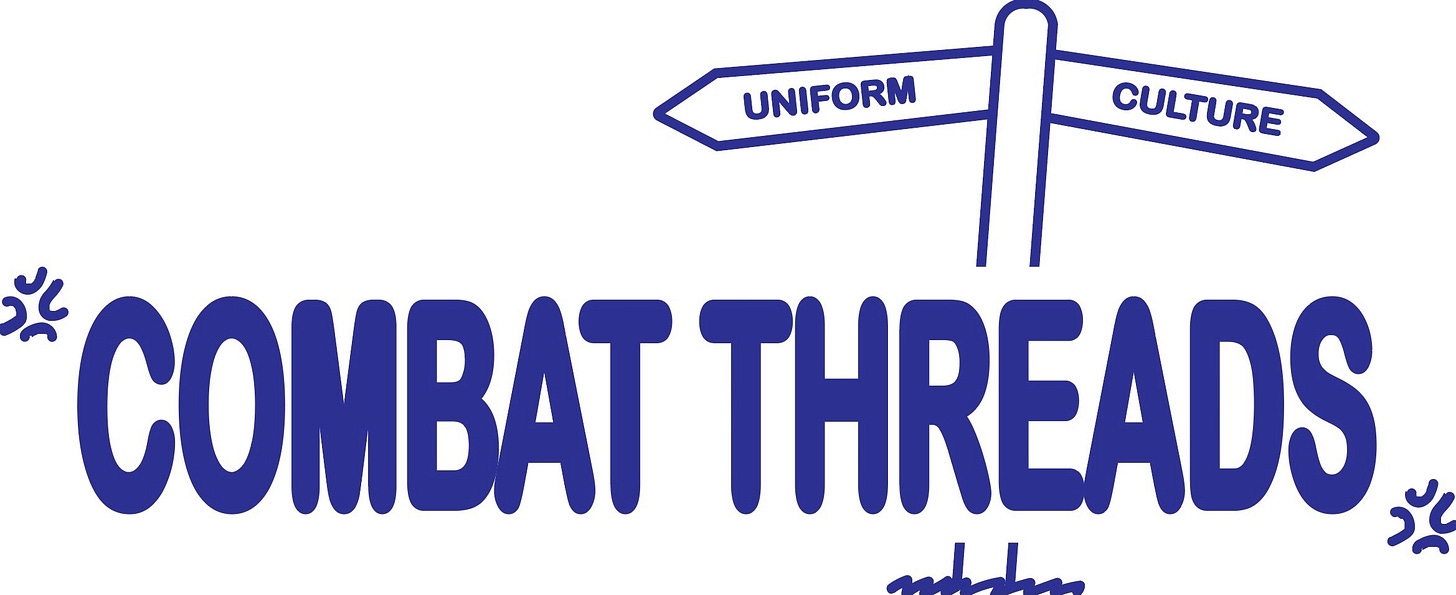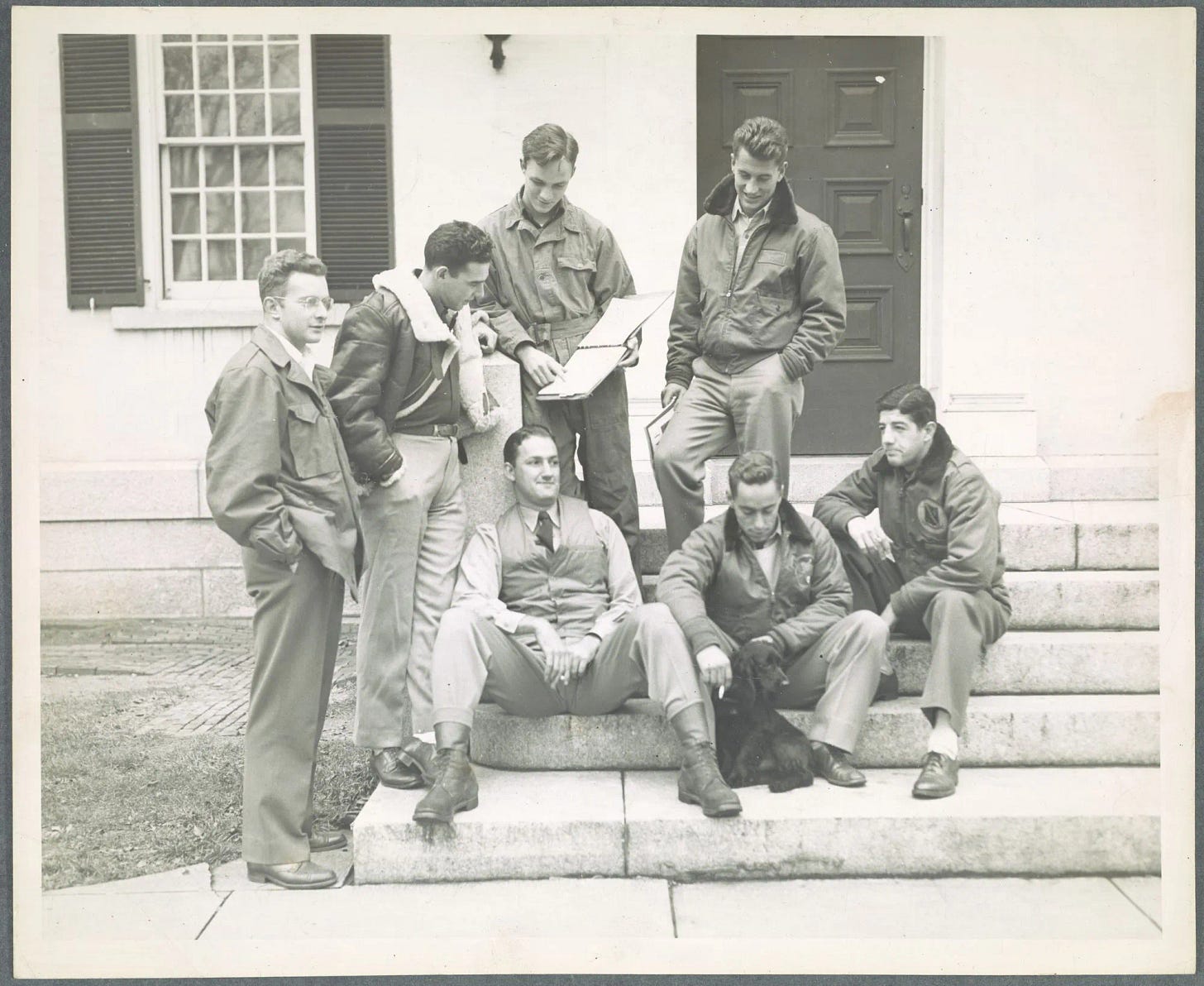Vol. 03 No. 02
This week, my friends over at Standard & Strange published my paper on the influence of Military Surplus on American collegiate fashion. This paper makes up a portion of my MA Thesis, which will expand on many of the ideas explored here. It begins in the immediate postwar period when WWII veterans on the GI Bill flooded college campuses wearing a hodge-podge of old uniforms and continues to the 1960s when students adopted military fashions in protest to the ongoing war in Vietnam and American consumerism. I’ll ket the paper pick up below. For the full text click here.
Military uniform design and fashion have long borrowed from each other. Military-inspired garments are commonplace, from mall brands to high-street boutiques. Nearly every designer or brand has done a take on a military field jacket, fatigue trousers, or even more generally, camouflage. How military uniforms became so intertwined in popular fashion started on college campuses. In the post-World War II years, the style of the American college student was both big business and the place where mainstream American fashion would be born. Bubbling up from dorms, classrooms, and quads, new styles of dress gained acceptance and spread into the mainstream.
The widespread adoption of military uniforms as everyday clothing began on college campuses in the immediate years after WWII. The GI Bill resulted in opening college education to whole classes of society like never before. The veteran college student became an icon of the post-war years, and they brought their old military uniforms with them to campus. The veteran college student, dressed in their old khakis, boots, and field jackets, was instrumental in the casualization of American style in the 20th century.
Even as the scarcities of the war years receded and were replaced by the prosperity of the 1950s, military uniforms were still ubiquitous on college campuses. New “Army & Navy Surplus Stores” sprouted up across the country from cities to college towns, stocked to the rafters with wares from the US military. The surplus store became an inexpensive place for college students to shop and create new styles from piles of olive green, brown, and khaki. The surplus stores also provided the rugged clothing needed by collegiate mountaineering and outdoor clubs and that would lay the groundwork for the outdoor industry of today.
The turbulence of the 1960s would help recast military surplus clothing as rebellious rather than utilitarian. Along with love beads, sandals, and denim, military surplus came to represent a wide array of countercultures on American campuses and beyond. From self-styled hippies, those looking to disengage from capitalist consumption to those militantly organizing against the state power, military clothing was a constant. The college students wearing olive drab in the 1960s would finally break the link between the garments and the military they were designed to clothe, appropriating and decontextualizing the garments in an act of subversion. While wearing an Army surplus is far from subversive now, it was the college student of the 1960s who brought surplus fully into mainstream popular fashion. They act as the link from the musty surplus stores and sweaty protests to camouflage trousers at The Gap and field jackets made by Yves Saint Laurent. We owe the place of military surplus and inspired design in fashion to college students.
Read more here.
Till next time,
C.W.M.
* * *




